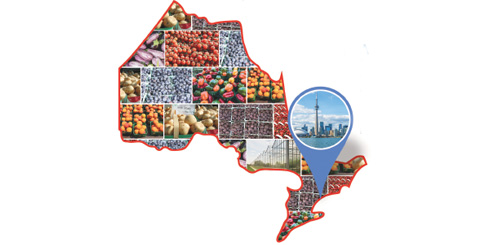“For a short period early in the year,” Dinis continues, “citrus was impossible to find; it was the first time in decades that citrus growers had this big of an issue with supply.” Prices typically fall from highs once growers get back on track and there’s more availability.
“California vegetables—broccoli and all the leafy greens—have been in the spotlight with spiking prices from droughts and floods,” agrees Formusa. “We saw huge broccoli prices,” he recalled, reaching as high as 40 and 50 Canadian dollars, when product normally sold for about half that amount.
Pricey Product
Of course, shortages and skyrocketing prices can hurt business, but when everyone is in the same boat and people have to eat—buyers and sellers must adjust and adapt to the prices or choose to do without. Few wholesalers are comfortable doing without certain products.
“Mostly, we’re finding that our customers are willing to pay because they have to have the commodity and there aren’t many alternative, viable sources,” explains Formusa. Inevitably, he notes, the “pricing trickles down to the retail shopper. We do a little less volume, but it all seems to be moving. Times like this give you a sense of the price elasticity of fresh fruits and vegetables.”
When wholesale prices spike due to weather, the costs get passed along to retailers and ultimately to consumers—up to a point. “The floods probably impacted our margin more than the on-the-floor retail price,” says Normand Legault, senior director of produce procurement at Metro Ontario, Inc.
“We do not pass along the full cost in high markets to the retail price,” Legault explains. “There’s a ceiling where there is no point in going any higher because you will dry up consumer demand.” Of course, such spikes do not affect all items, as some products are protected by contract pricing.
New Retail Products & Venues Create Buzz
Sometimes price isn’t the prime, motivating factor when it comes to grocery shopping, as consumers weigh the cost of convenience. With a desire for balanced meals up against the time it takes to prepare them, more and more shoppers are reaching for both value-added packaged kits and ready-to-eat side and full meal solutions.
According to a recent Technomic market research report, Canadian retailers have been more than happy to provide shoppers with a broad range of packaged meal solutions. This is confirmed by Legault, who says, “The trend in packaged products has definitely increased over the past year.”
One finding from the report was of particular note to suppliers: more than 60 percent of retail meal solution purchases are planned, while 38 percent are impulse buys. This means suppliers have a continuous pool of shoppers who regularly buy prepared meal kits, along with others who will buy more if the prepacked meals meet their expectations. Equally interesting is a message for retailers: more than half of consumers surveyed cared as much about the friendliness of the grocer’s staff as the meal kits themselves.



